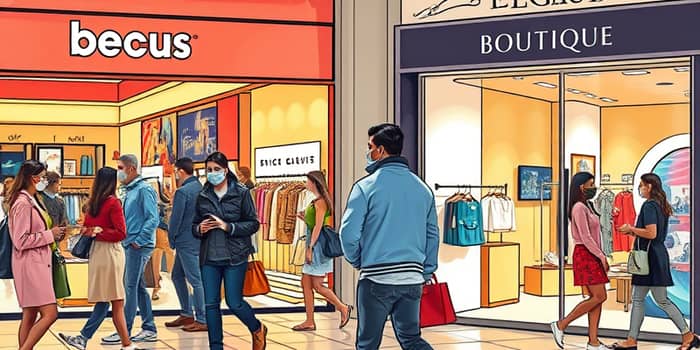
In the aftermath of COVID-19, consumers are rethinking where and how they spend their money, balancing optimism with caution.
The result is a transformed retail landscape, marked by value-driven, selective shopping habits and evolving industry winners and losers.
In Q2 2025, U.S. consumer spending reached an all-time high of $16.45 trillion, up modestly from $16.35 trillion in Q1. Despite these record levels, the pace of expansion has slowed dramatically compared to the robust 5.7% growth seen in 2024.
Forecasts for 2025 now range between 2.3% and 3.7% nominal growth, dipping further to 2.9% in 2026. When adjusted for inflation, real spending has been largely flat since late 2024, as rising prices and policy uncertainty prompt consumers to become more discerning in their discretionary outlays.
Today’s shoppers are more intent on stretching every dollar. Discount and dollar stores, along with off-price apparel retailers, are thriving in this climate, offering what many describe as a treasure-hunt shopping experience that satisfies both price and novelty seekers.
Across income levels, households are trading down to generics, clipping coupons and trimming small luxuries such as daily café visits and weekend getaways. In 2025, 69% of parents report setting defined spending budgets—a 10-point jump from the previous year—underscoring a broad shift toward financial planning.
Practical tip: Consumers can map out monthly budgets and target seasonal sales, while retailers should sharpen promotional calendars and loyalty rewards to align with these mindful spending patterns.
The post-pandemic spending story is deeply shaped by generational and income splits. Baby Boomers, with stable retirement incomes, show the least change in discretionary behavior in response to inflation and tariffs.
By contrast, Gen Z and Millennials are the most hesitant, often delaying purchases or seeking second-hand alternatives. Meanwhile, high-income households continue to invest in luxury goods, athleisure, and travel, while lower-income shoppers drive growth in discount and off-price segments.
Marketers should tailor messages: emphasize quality and reliability to older cohorts, sustainability and value to younger consumers, and personalized offers to all segments to meet diverse needs.
Although durable goods spending leapt 12.1% in Q4 2024—fueled by TVs, vehicles, and electronics—consumers are now deferring larger home-improvement and appliance investments. Instead, they opt for modest home décor upgrades and fitness subscriptions.
Retailers are responding by enhancing brick-and-mortar with technology-driven, purpose-driven encounters. Beauty and apparel stores report longer dwell times as shoppers experiment with augmented-reality mirrors, personalized consultations, and curated pop-up events.
Online remains critical: 43% of consumers start seasonal shopping earlier to find bargains via digital channels. The result is a seamless omnichannel model where discovery, price comparison, and final purchase flow across devices and in-store touchpoints.
Brands that invest in immersive and differentiated experiences and strengthen digital interfaces will capture both time-pressed and bargain-focused shoppers.
The US consumer discretionary sector expects dividend growth of 6.46%, rising to $43.2 billion in 2025—down from 8.9% in 2024. Hotels, restaurants, and leisure foresee an 8.4% dividend uptick, with restaurants alone composing 71% of the segment’s payouts.
Holiday spending, however, is projected to fall by 5% compared to 2024—the first decline in over a decade. Credit delinquencies are creeping upward, though defaults remain contained. Businesses should brace for a Q4 2025 and Q1 2026 slowdown as cooling labor markets and cautious consumers converge.
As 2025 unfolds, selective consumption looks set to remain central. A distinct split persists: resilient, affluent buyers invest in luxury and experiences, while budget-focused shoppers drive discount and off-price growth.
For consumers, the era demands clear priorities, disciplined budgeting, and smart timing. For businesses, success hinges on rapid adaptation, tailored value propositions, and agile retail innovation. With flexibility and strategic adaptation, both parties can navigate the evolving landscape and thrive in this new normal.
References













